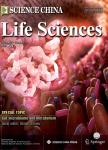Co-expression with RadA and the characterization of stRad55B, a RadA paralog from the hyperthermophilic crenarchaea Sulfolobus tokodaii
Co-expression with RadA and the characterization of stRad55B, a RadA paralog from the hyperthermophilic crenarchaea Sulfolobus tokodaii作者机构:State Key Laboratory of Microbial Technology Shandong University Jinan 250100 China
出 版 物:《Science China(Life Sciences)》 (中国科学(生命科学英文版))
年 卷 期:2008年第51卷第1期
页 面:60-65页
学科分类:0710[理学-生物学] 07[理学] 071005[理学-微生物学]
基 金:Supported by the National Basic Research Program of China (Grant No. 2004CB719604) National Natural Science Foundation of China (Grant Nos. 30470386 and 30700011)
主 题:Archaea recombinational repair RadA Rad55 co-expression
摘 要:ST0838 (designed stRad55B) is one of the four RadA paralogs (or Rad55 homologues) in the genome of the hyperthermophilic crenarchaeon Sulfolobus tokodaii. The gene is induced by UV irradiation, sug-gesting that it is involved in DNA recombinational repair in this organism. However, this protein could not be expressed normally in vitro. In this study, thermostable and soluble stRad55B was obtained by co-expression with S. tokodaii RadA (stRadA) in E. coli, and the enzymatic properties were examined. It was found that stRad55B bound ssDNA preferentially and had a very weak ATPase activity that was not stimulated by DNA. The recombinant protein inhibited the strand exchange activity promoted by stRadA, indicating that stRad55B might be an inhibitor to the homologous recombination in this ar-chaeon. The results will be helpful for further functional and interaction analysis of RadA paralogs and for the understanding of the mechanism of recombinational repair in archaea.



